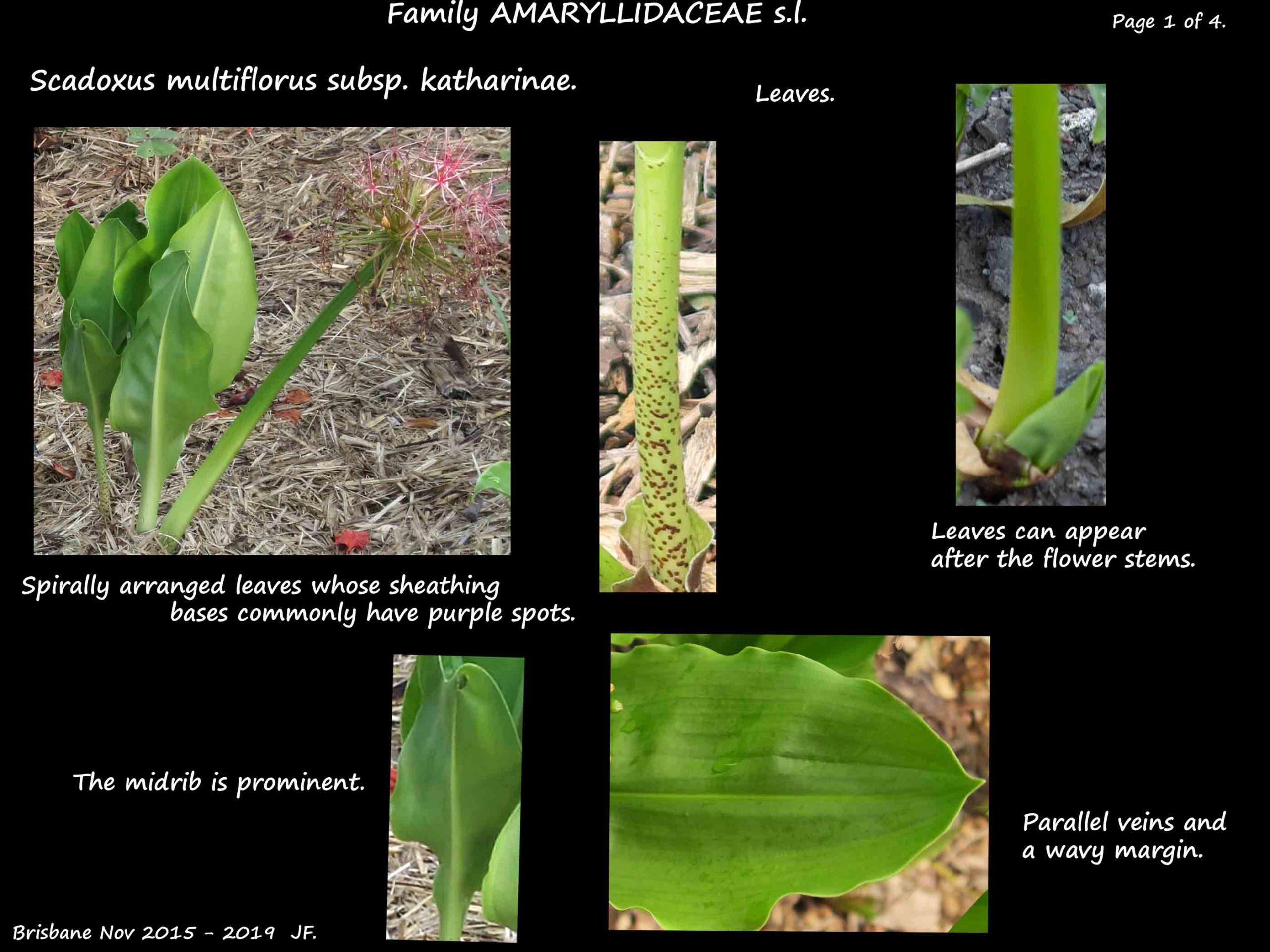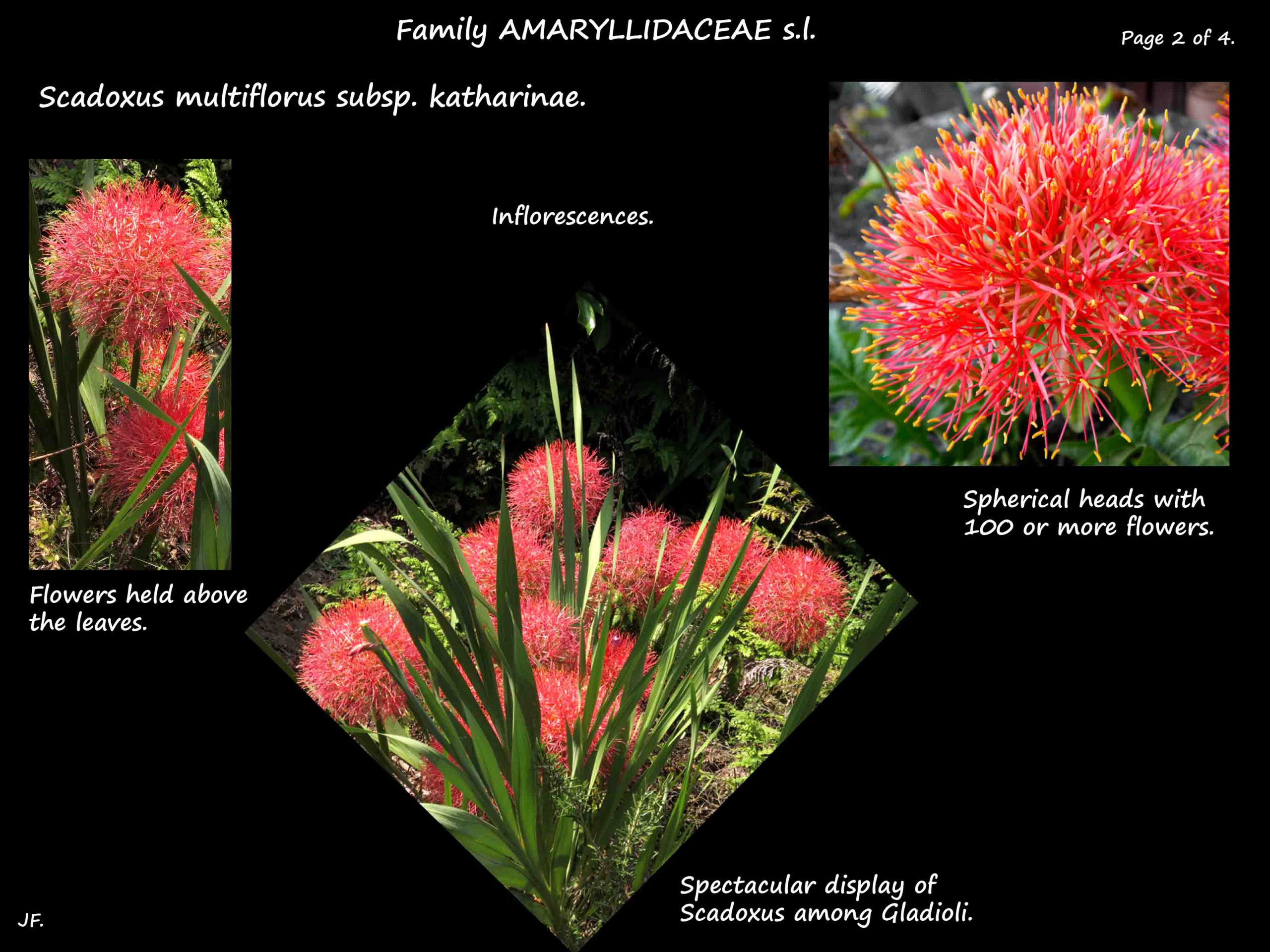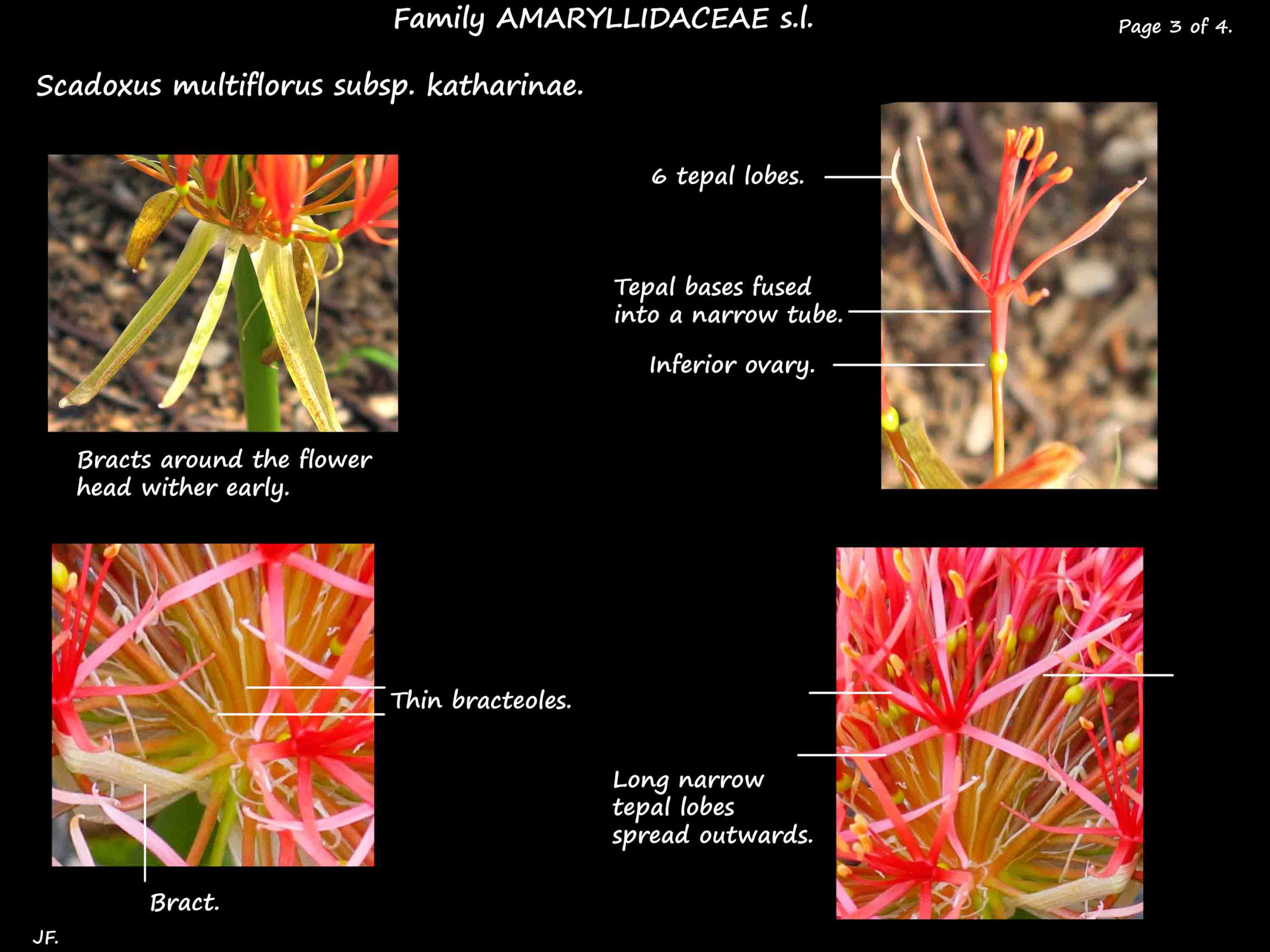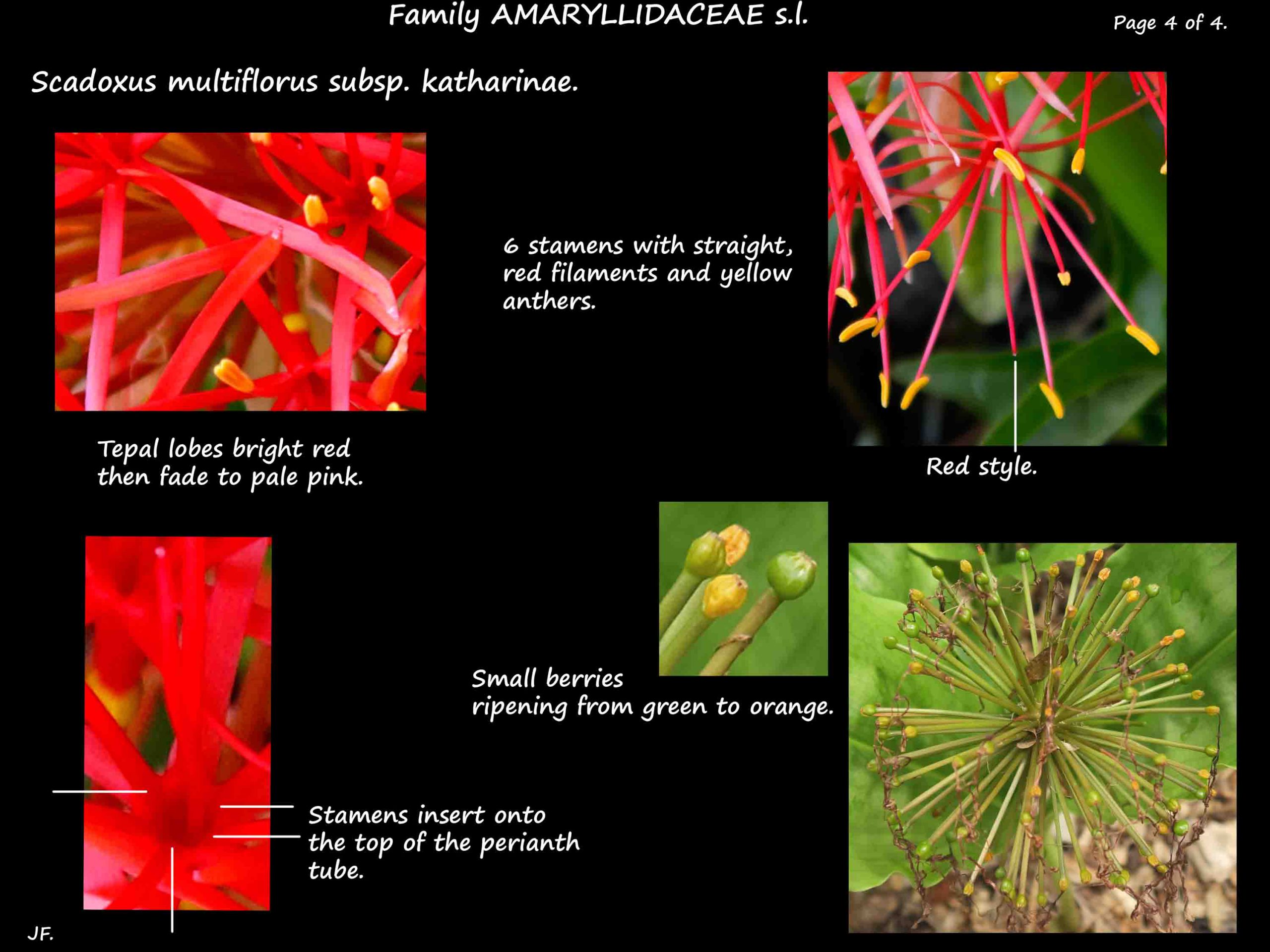Scadoxus multiflorus.
Family Amaryllidaceae > Subfamily Amaryllidoideae > Tribe Haemantheae.
There are 9 species from Africa with Scadoxus multiflorus commonly cultivated.
Scadoxus multiflorus was previously known as Haemanthus multiflorus.
There are 3 subspecie sof the Blood lily – S. multiflorus ssp. katherinae,
ssp. longitubus and ssp. multiflorus.
The plant grows from a bulb which also has rhizomes (underground stems).
The 6 – 9 spirally arranged leaves are on stalks that have purple spots.
The close stalk bases form a pseudostem from a few cms up to 0.5 m high.
The bright green leaves, about 30 cm long may appear with or after the flowers.
The blades have a very prominent midrib and a wavy edge.
Each bulb has one inflorescence a season.
The scape (leafless inflorescence stem) is up to 75 cm high.
It also has purple spots on it and holds the flowers above the leaves.
The spherical flower head, up to 25 cm across has up to 100 flowers.
Around the base are bracts that wither before the flowers are fully open.
Each flower is on a stalk up to 4.5 cm long.
There are 6 bright red tepals that fade to pink or white as the flower ages.
Their bases are fused into a narrow perianth tube up to 2.5 cm long.
The narrow, spreading lobes are up to about 3 cm long.
The 6 stamens have red filaments and bright yellow anthers.
The fruit are berries up to 10 mm across that are red or orange-red.
There are a few hybrids.
Haemanthus and Scadoxus.
Haemanthus and Scadoxus, both in the tribe Haemantheae, are similar plants.
Both have spherical inflorescence heads of many bright red flowers.
In Haemanthus the large bracts remain around the flower head, in Scadoxus they wither early.
Haemanthus leaves are opposite, Scadoxus are alternate in a spiral.
Haemanthus leaves have no stalk or pseudostem, Scadoxus have both.
Haemanthus have bulbs, Scadoxus bulbs and rhizomes.
J.F.





